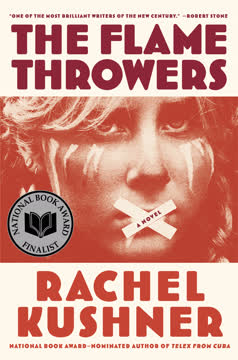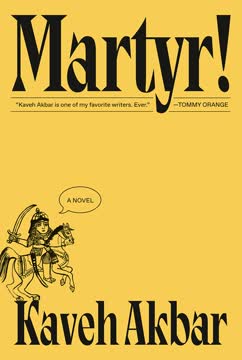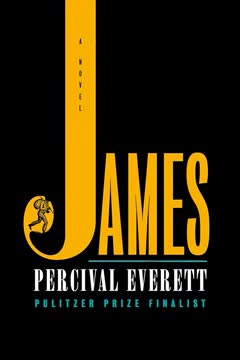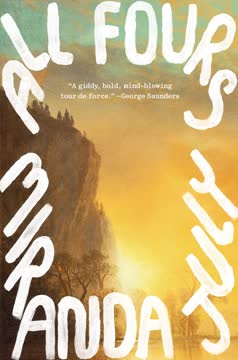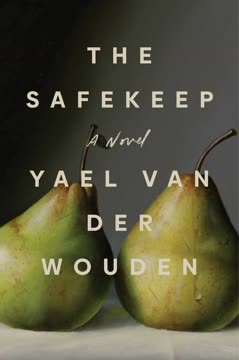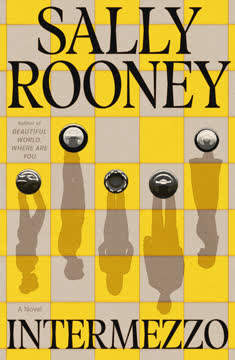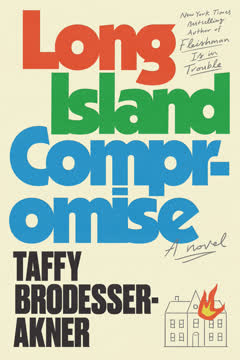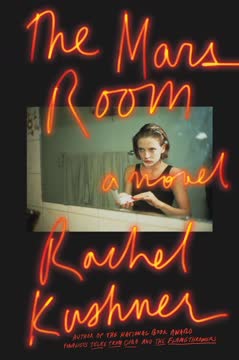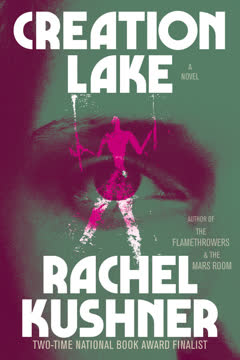Plot Summary
Arrival in a New World
Reno, a young woman from Nevada, arrives in 1970s New York City, determined to turn her love of motorcycles and speed into art. She enters a world of artists, dreamers, and squatters in SoHo, where the boundaries between art and life blur. Alone and searching for connection, she is swept into the city's vibrant, chaotic energy, meeting people who will shape her journey—most notably Sandro Valera, an Italian artist and heir to a tire and motorcycle empire. Reno's outsider status, both as a Westerner and a woman, sets her apart, but also gives her a unique perspective on the city's shifting social and artistic landscape.
Speed as Art
Reno's fascination with speed is not just about thrill—it's a way of making art, of drawing lines across landscapes, of marking time and space. She rides her Moto Valera motorcycle across the Nevada desert, inspired by land artists and the mythos of the American West. Her journey is both literal and metaphorical: she seeks to capture the essence of movement, risk, and the fleeting nature of experience. The salt flats of Bonneville become her canvas, and her attempt to set a land speed record is as much about self-definition as it is about breaking barriers.
Lovers and Power
Reno's relationship with Sandro is charged with imbalance—he is older, established, and carries the weight of family legacy, while she is young, unproven, and hungry for meaning. Their affair is passionate but fraught, shaped by the power dynamics of age, gender, and class. Sandro's world is one of privilege and artistic success, but also of emotional distance and hidden wounds. Reno is both drawn to and alienated by his confidence, his connections, and the way he navigates the art world. Their love becomes a battleground for issues of autonomy, mentorship, and the search for authenticity.
Becoming Reno
In New York, Reno struggles to find her place. She works odd jobs, befriends Giddle, a waitress and sometime sex worker, and becomes a "China girl"—her face used as a color standard in film labs, a symbol of anonymous femininity. The city is a maze of encounters: artists, hustlers, revolutionaries, and lost souls. Reno's sense of self is constantly in flux, shaped by the people she meets and the roles she plays. She is both observer and participant, her identity as mutable as the city itself.
The Art of Violence
The novel weaves in the story of Sandro's father, T.P. Valera, whose life spans two world wars, the rise of Italian Futurism, and the brutal realities of industrial capitalism. Violence is both literal and symbolic: from the trenches of World War I to the factory floor, from the streets of New York to the political upheavals of 1970s Italy. The Valera family's wealth is built on rubber, motorcycles, and the exploitation of labor. The legacy of violence—personal, familial, and societal—haunts every character, shaping their choices and their fates.
Blank Canvases, Blank Lives
Reno's artistic ambitions are mirrored by the experimental art scene around her: performance pieces, minimalist sculptures, and conceptual gestures that blur the line between art and life. She is both muse and maker, her body and experiences becoming material for others' work as well as her own. The theme of blankness—empty apartments, unformed identities, the "China girl" film leader—recurs throughout, symbolizing both possibility and alienation. The question of what is real and what is performance is ever-present.
The Sentimental Education
Reno's education is not just artistic but emotional. She is mentored by Sandro and his best friend Ronnie Fontaine, a charismatic, elusive artist with a penchant for reinvention. Their friendship is deep but competitive, marked by shared histories and unspoken tensions. Ronnie's presence is both a comfort and a challenge to Reno, offering her glimpses of alternative ways of being. The trio's dynamic is complicated by desire, jealousy, and the shifting allegiances of the art world.
The Salt and the Crash
Reno's attempt to set a land speed record at Bonneville is a pivotal moment. She crashes spectacularly, her body battered but her spirit unbroken. The crash is both a literal and metaphorical reckoning: with risk, with mortality, with the limits of ambition. The aftermath brings her into contact with the Valera racing team, and she is drawn deeper into the world of Italian industry, family politics, and the intersection of art and commerce. The experience leaves her changed, both empowered and vulnerable.
Factory Shadows
Traveling to Italy with Sandro, Reno is exposed to the realities behind the Valera fortune: factories, strikes, and the simmering unrest of 1970s Italy. The Valera family is besieged by labor disputes, sabotage, and the threat of political violence. Reno witnesses the gulf between the privileged world of the Valeras and the lives of their workers. The factory becomes a symbol of both creation and exploitation, a place where personal and political histories collide. Reno's outsider status allows her to see the contradictions and costs of power.
Revolution and Betrayal
As Italy erupts in protest and violence, Reno is swept into the orbit of leftist militants, squatters, and the radical "Movement." She becomes entangled with Gianni, a mysterious figure who may be both lover and revolutionary. Betrayed by Sandro, who is unfaithful with his cousin Talia, Reno flees into the arms of the Movement, finding both solidarity and danger. The boundaries between personal and political betrayals blur, and Reno is forced to confront the limits of loyalty, love, and self-preservation.
The Rules of the Game
At the Valera villa on Lake Como, Reno is thrust into the rituals and cruelties of old money. Sandro's mother is imperious and cold, his brother Roberto is rigid and embattled, and cousin Talia is both rival and mirror. The family's history is one of survival, adaptation, and moral compromise. Reno's attempts to fit in are met with condescension and exclusion. The rules of the game—of class, of gender, of family—are both explicit and unspoken, and Reno must decide whether to play by them or break free.
The March on Rome
In Rome, Reno witnesses a massive demonstration that turns violent, as police and protesters clash in the streets. The city is a cauldron of anger, hope, and chaos. The march is both a political event and a personal crucible, forcing Reno to confront her own complicity, her desires, and her fears. The boundaries between revolution and spectacle, between collective action and individual survival, are porous and unstable. The experience leaves Reno both exhilarated and adrift.
The Motherfuckers' Legacy
The novel draws parallels between the Italian radicals of the 1970s and the American counterculture of the 1960s, embodied by the anarchist group the Motherfuckers. Through characters like Burdmoore Model and Nadine, Kushner explores the allure and the failures of revolutionary movements, the seductions of violence, and the inevitable compromises of adulthood. The legacy of rebellion is both inspiring and tragic, a source of myth and of disillusionment.
The Calendar Girl
Reno's work as a "China girl" in the film lab becomes a metaphor for the ways women are seen and not seen, desired and erased. She is both subject and object, her image used to calibrate color but her identity unknown. The theme recurs in the art world's treatment of women, in the sexual politics of the Valera family, and in Reno's own struggles to define herself outside the roles assigned to her. The calendar girl, the mannequin, the model—all are figures of both power and vulnerability.
Faces and Masks
Throughout the novel, characters wear masks—literal and figurative. The art world is a theater of personas, the political world a stage for revolutionary posturing. Reno herself is constantly shifting roles: artist, lover, muse, rebel, outsider. The question of what is real and what is performance haunts every relationship, every ambition. The search for authenticity is both urgent and elusive, complicated by the demands of survival and the seductions of spectacle.
The Villa and the Family
At the heart of the novel is the Valera family, whose wealth and power are both a source of security and a curse. The villa on Lake Como is a microcosm of Italian history: aristocratic, beautiful, haunted by violence and loss. The family's rituals, resentments, and secrets are played out against a backdrop of political crisis. Reno's presence is both disruptive and illuminating, exposing the fractures beneath the surface. The past is never past; it shapes every present moment.
The Red Brigades
The political violence of 1970s Italy comes to a head with the kidnapping of Sandro's brother Roberto by the Red Brigades. The event is both personal and historical, a reckoning with the costs of power and the limits of justice. Reno is implicated, both by her association with Gianni and by her own choices. The lines between victim and perpetrator, between justice and revenge, are blurred. The consequences are irreversible, and the novel refuses easy answers.
Behind the Green Door
In the novel's final movement, Reno returns to New York, changed by her experiences but uncertain of her future. The city is in blackout, both literally and metaphorically. Old relationships are broken, new ones are tentative. The art world moves on, indifferent to individual suffering. Reno rides her motorcycle through the darkened streets, a figure of both freedom and isolation. The novel ends not with resolution but with the open question of what comes next—how to live, how to make art, how to be.
Characters
Reno
Reno is the novel's protagonist, a young woman from Nevada who comes to New York to make art out of speed and risk. Her journey is one of self-discovery, marked by ambition, vulnerability, and a restless search for meaning. She is both observer and participant, her identity shaped by the people she meets and the worlds she enters. Reno's relationships—with Sandro, Ronnie, Giddle, and Gianni—are complex, marked by desire, power, and betrayal. She is both muse and maker, her body and experiences becoming material for art and for life. Over the course of the novel, Reno is transformed by love, loss, and the violence of history, emerging both wounded and resilient.
Sandro Valera
Sandro is a successful artist and the semi-estranged heir to the Valera tire and motorcycle empire. Charismatic, intelligent, and emotionally distant, he embodies both the allure and the limitations of privilege. His relationship with Reno is passionate but unequal, shaped by age, class, and the weight of family history. Sandro is haunted by his father's legacy, by the violence and compromises that built the Valera fortune. He is both mentor and rival, his love for Reno complicated by his own needs and failings. Sandro's betrayal of Reno is both personal and symbolic, a reenactment of the larger betrayals that define his world.
Ronnie Fontaine
Ronnie is Sandro's best friend and Reno's sometime lover, a charismatic and elusive figure who reinvents himself constantly. He is both confidant and competitor, his relationship with Sandro marked by deep affection and underlying tension. Ronnie is a master of performance, his art and his life blurring together. He is both a source of comfort and a challenge to Reno, offering her glimpses of alternative ways of being. Ronnie's own history is marked by loss, guilt, and the search for authenticity. He is both a mirror and a foil to the other characters, embodying the novel's themes of identity, performance, and the longing for connection.
Giddle
Giddle is a waitress, sometime sex worker, and Reno's first friend in New York. She is a master of reinvention, her life a series of performances—waitress, artist's muse, mortuary student. Giddle's loneliness is profound, her need for attention and validation both comic and tragic. She offers Reno both companionship and cautionary example, embodying the dangers and possibilities of self-invention. Giddle's relationships are transactional, her sense of self fragile and mutable. She is both a guide and a warning, her fate a reminder of the costs of survival in a world that values spectacle over substance.
T.P. Valera
Sandro's father, T.P. Valera, is a larger-than-life figure whose life spans two world wars, the rise of Italian Futurism, and the brutal realities of industrial capitalism. He is both creator and destroyer, his wealth built on rubber, motorcycles, and the exploitation of labor. T.P. Valera's legacy is one of violence—personal, familial, and societal. His influence shapes Sandro's life and choices, casting a long shadow over the novel's events. He is both a symbol of the old world and a harbinger of the new, his story a meditation on the costs of progress.
Roberto Valera
Sandro's older brother, Roberto, runs the Valera company with an iron hand, enforcing harsh labor policies and becoming a target for political violence. He is rigid, conservative, and embattled, his life defined by the demands of family and business. Roberto's kidnapping and death at the hands of the Red Brigades are both personal tragedy and historical reckoning, a symbol of the price of power and the limits of justice. His fate haunts Sandro and Reno, a reminder of the inescapable consequences of history.
Talia Valera
Talia is Sandro's cousin, a cosmopolitan, sexually liberated woman who becomes both rival and mirror to Reno. Her presence disrupts the fragile balance of the Valera family, exposing hidden desires and resentments. Talia is both alluring and dangerous, her confidence masking her own vulnerabilities. Her affair with Sandro is both a betrayal and a revelation, forcing Reno to confront the limits of love and loyalty. Talia embodies the novel's themes of freedom, transgression, and the costs of self-assertion.
Gianni
Gianni is a mysterious figure who enters Reno's life in Italy, drawing her into the world of the radical Movement. He is both lover and revolutionary, his motives and allegiances ambiguous. Gianni is a man of action, his silence and reserve masking deep convictions and hidden wounds. He offers Reno both escape and danger, his presence a catalyst for her transformation. Gianni's role in the kidnapping of Roberto Valera implicates Reno in the violence of history, forcing her to confront the limits of innocence and the costs of complicity.
Burdmoore Model
Burdmoore is a former member of the anarchist group the Motherfuckers, a relic of the 1960s counterculture. He is both a survivor and a casualty of the failed revolution, his stories a mix of nostalgia, regret, and bravado. Burdmoore's presence in the novel is both comic and tragic, a reminder of the allure and the limits of radicalism. He is a mentor and a warning, his life a testament to the costs of rebellion and the inevitability of compromise.
Nadine
Nadine is a woman who moves through the novel's worlds—prostitute, artist's muse, survivor of violence and addiction. Her story is one of reinvention and endurance, her beauty both a weapon and a curse. Nadine's relationships are transactional, her sense of self fragile and mutable. She is both a cautionary tale and a symbol of survival, her fate a reminder of the costs of desire and the dangers of being seen.
Plot Devices
Nonlinear Narrative and Interwoven Timelines
Kushner employs a nonlinear narrative, moving back and forth between Reno's present in New York and Italy, the histories of the Valera family, and the stories of secondary characters. This structure reflects the fragmented, uncertain nature of identity and history. The interweaving of personal and political timelines blurs the boundaries between individual experience and collective history, emphasizing the ways in which the past shapes the present.
Art as Metaphor and Motif
Art is both subject and structure in the novel: performance art, land art, minimalist sculpture, and conceptual gestures all serve as metaphors for the characters' struggles with meaning, identity, and power. The recurring motif of the "China girl"—the anonymous female face used to calibrate film—becomes a symbol of the ways women are seen and not seen, desired and erased. The novel itself is structured as a kind of performance, blurring the line between art and life.
Velocity and Risk
The motif of speed—motorcycles, land speed records, the rush of the city—serves as both literal and metaphorical engine for the narrative. Velocity is a way of marking time, of asserting presence, of courting risk and transformation. The crash on the salt flats is both a climax and a turning point, a moment of reckoning with mortality, ambition, and the limits of control.
Political and Social Upheaval
The novel is set against the backdrop of 1970s political violence: the Italian Years of Lead, the rise of the Red Brigades, the legacy of 1960s American radicalism. These events are not just background but active forces shaping the characters' lives. The boundaries between personal and political betrayals are blurred, and the costs of power, privilege, and resistance are made starkly visible.
Masks, Performance, and Identity
Characters in the novel are constantly performing—artist, lover, revolutionary, muse. The question of what is real and what is performance is central, as is the tension between visibility and anonymity. The use of masks, both literal (in protests, in art) and figurative (in relationships, in self-presentation), underscores the instability of identity and the difficulty of genuine connection.
Foreshadowing and Recurrence
Kushner uses foreshadowing and recurring motifs—crashes, betrayals, revolutions, performances—to create a sense of inevitability and fatalism. The past is never past; it recurs in new forms, shaping the present and foreclosing certain futures. The novel's structure is cyclical, its ending open, its questions unresolved.
Analysis
The Flamethrowers is a dazzling, layered meditation on art, power, gender, and revolution, set against the tumultuous backdrop of 1970s New York and Italy. Through Reno's journey, Kushner explores the ways in which personal ambition, desire, and vulnerability are entangled with the larger forces of history and violence. The novel interrogates the mythologies of speed, risk, and artistic creation, exposing the costs of both privilege and rebellion. It is a story about the search for authenticity in a world of performance, about the longing for connection in a landscape of masks and betrayals. Kushner's narrative is both intimate and epic, her prose electric with detail and insight. The Flamethrowers ultimately asks what it means to make art—and to live—when the boundaries between self and world, between freedom and complicity, are always shifting. It is a novel for our time: restless, searching, and unafraid to confront the darkness at the heart of modern life.
Last updated:
FAQ
Synopsis & Basic Details
What is The Flamethrowers about?
- A Young Woman's Odyssey: The Flamethrowers follows Reno, a young woman from Nevada, as she moves to 1970s New York City, seeking to transform her passion for motorcycles and speed into art. She navigates the city's vibrant, often chaotic art scene, becoming entangled with an older, established Italian artist, Sandro Valera, heir to a tire and motorcycle empire.
- Art, Identity, and Rebellion: The narrative explores themes of identity, ambition, and the blurring lines between art and life, as Reno attempts a land speed record on the Bonneville Salt Flats and later finds herself immersed in the political turmoil of 1970s Italy, including labor strikes and radical movements. Her journey is one of self-discovery, marked by complex relationships, betrayals, and a confrontation with the legacies of violence and privilege.
- Historical and Personal Intersections: The story interweaves Reno's contemporary experiences with the historical backdrop of Sandro's family, tracing their involvement in Italian Futurism, two world wars, and the industrial exploitation of rubber in the Amazon. This rich tapestry connects personal narratives to broader historical and political upheavals, examining the costs of progress and the elusive nature of freedom.
Why should I read The Flamethrowers?
- Immersive Historical Detail: Rachel Kushner masterfully recreates the gritty, electric atmosphere of 1970s New York art scene and the politically charged landscape of Italy, offering a vivid, almost tactile reading experience. The novel's deep dive into historical contexts, from early motorcycling to radical political movements, provides a rich tapestry that feels both authentic and illuminating.
- Complex Character Exploration: The book features a cast of unforgettable characters, particularly Reno, whose journey of self-discovery is both aspirational and deeply human. Readers will be drawn to her quest for authenticity, her navigation of power dynamics, and her resilience in the face of betrayal, offering profound insights into female agency and artistic ambition.
- Intellectually Stimulating Themes: Beyond its compelling plot, The Flamethrowers delves into profound questions about art, identity, gender, class, and the nature of revolution. Its exploration of how personal lives intersect with historical forces, and the subtle ways power operates in relationships, makes it a thought-provoking read that lingers long after the final page.
What is the background of The Flamethrowers?
- 1970s Cultural and Political Milieu: The novel is deeply rooted in the cultural and political landscape of the 1970s, particularly the New York art world (SoHo, performance art, minimalism) and Italy's "Years of Lead" (Anni di piombo), a period of intense political terrorism and social unrest involving groups like the Red Brigades. This historical context is crucial to understanding the characters' motivations and the story's thematic concerns.
- Industrial and Wartime Legacies: A significant portion of the background delves into the history of the Valera family, tracing their origins in early 20th-century Italy, their involvement in the Futurism movement, and their industrial empire built on motorcycles and rubber. This includes the brutal exploitation of rubber tappers in the Amazon during WWII, highlighting the often-hidden costs of industrial wealth and the long shadow of colonial practices.
- Motorcycle and Land Art History: The book draws heavily on the history of motorcycling, speed records, and land art, particularly the work of figures like Robert Smithson and the mystique of the Bonneville Salt Flats. Reno's artistic aspirations are directly influenced by these real-world movements, grounding her personal quest in a rich cultural history of speed, landscape, and artistic intervention.
What are the most memorable quotes in The Flamethrowers?
- "Speed doesn't have to be an issue of time. On that day, riding a Moto Valera east from Reno, it was an issue of wanting to move across the map of Nevada that was taped to my gas tank as I moved across the actual state.": This quote, from Chapter 2, encapsulates Reno's unique philosophy of speed as an artistic and existential pursuit, detaching it from mere utility and elevating it to a form of self-expression and connection to the landscape. It highlights her core motivation for her land art project.
- "You don't have to immediately become an artist. You have the luxury of time. You're young. Young people are doing something even when they're doing nothing. A young woman is a conduit. All she has to do is exist.": Spoken by Sandro in Chapter 2, this quote reveals the power dynamics in his relationship with Reno, framing her youth and perceived passivity as an asset. It subtly foreshadows his eventual betrayal and her struggle against being merely a "conduit" or muse, rather than an active creator.
- "The uselessness of the truth.": Ronnie Fontaine's chilling declaration in Chapter 16, after revealing a series of painful truths about Sandro and his relationships, underscores a central theme of the novel: the subjective and often unhelpful nature of truth. It highlights how characters construct narratives and fictions, not always to deceive, but sometimes to cope, to perform, or to protect themselves from harsh realities.
What writing style, narrative choices, and literary techniques does Rachel Kushner use?
- Nonlinear, Layered Narrative: Kushner employs a fragmented, non-chronological structure, weaving together Reno's present experiences with historical flashbacks and the backstories of other characters. This technique, as seen in chapters like "He Killed him with a Motorbike Headlamp" (Chapter 1) and "It was Milk" (Chapter 9), creates a rich, dense tapestry that mirrors the complex, interconnected nature of history and personal memory, inviting readers to piece together meaning.
- Vivid, Sensory Prose: The novel is characterized by its highly descriptive and evocative language, immersing the reader in sensory details, from the "silvery patter of tree leaves" (Chapter 1) to the "smell of burning tires" (Chapter 10) in Port Arthur. Kushner's prose is precise and often poetic, using striking metaphors and similes (e.g., clouds "sheared flat along their bottom edges like they were melting on a hot griddle" in Chapter 2) to create a palpable atmosphere and deepen emotional resonance.
- Intertextual and Allusive Storytelling: Kushner integrates numerous cultural, artistic, and historical references, from Land Art (Robert Smithson) and film (Nina Simone, Klute) to political theory (Moishe Bubalev) and literary allusions (Sylvia Plath). These references, often woven subtly into dialogue or internal monologue, enrich the narrative's thematic depth, inviting readers to engage with a broader intellectual and artistic conversation, as seen in discussions about "Spiritual America" (Chapter 4) or the "China girl" (Chapter 6).
Hidden Details & Subtle Connections
What are some minor details that add significant meaning?
- The Borsalino Hat's Journey: The brown felt Borsalino hat, initially found by Reno in a bar and given to Ronnie, then appearing on Talia's head at the Valera villa (Chapter 14), subtly tracks the shifting allegiances and betrayals within Reno's relationships. It symbolizes the casual exchange of affections and possessions among Sandro's circle, highlighting Reno's initial naiveté and the transient nature of her connections.
- "China Girl" as a Metaphor for Female Objectification: Reno's job as a "China girl" (Chapter 6), a reference image for film color correction, is more than just a job; it's a profound metaphor for how women are seen and used in the art world and society. Her face is a "universal standard" for "Caucasian skin," meant to be "anonymous, friendly, comely," yet her individuality and "trauma" (her bruises from the crash) are deemed disruptive, underscoring the pressure on women to conform to idealized, often invisible, roles.
- The Groundsman's Gaze and the Polenta Stones: At the Valera villa, the groundsman's "intense" and "wry" gaze (Chapter 14) unnerves Reno, suggesting a deeper understanding or judgment of her situation. His silent presence, coupled with the "polenta stones" used for the patio, subtly highlights the class divide and the historical labor that underpins the Valera family's privilege, contrasting their leisure with the unseen toil of others.
What are some subtle foreshadowing and callbacks?
- Valera's Ancestral Violence and Reno's Crash: The opening chapter, detailing Valera's grandfather killing a German soldier with a motorbike headlamp in WWI (Chapter 1), subtly foreshadows the novel's pervasive theme of violence and its connection to motorcycles and the Valera legacy. This early act of "quick violence" echoes Reno's own high-speed crash on the salt flats (Chapter 8), linking her personal risk to a deeper, inherited history of destructive force.
- "Save Your Freedom for a Rainy Day" Graffiti: The recurring graffiti in Rudy's Bar bathroom, "Save your freedom for a rainy day" (Chapter 2, Chapter 10), acts as a subtle, ironic commentary on the characters' pursuit of freedom. It foreshadows the eventual "blackout" (Chapter 18) and the political unrest in Italy, suggesting that true freedom might be elusive or only truly appreciated when lost, and that many characters squander their freedom in superficial ways.
- Ronnie's "Layaway Plan" Girl: Ronnie's casual mention of a "layaway plan" for a girl he's "keeping on reserve" (Chapter 10) subtly foreshadows Sandro's later relationship with this same girl. This detail highlights the transactional and interchangeable nature of relationships among some characters, and the casual disregard for emotional commitment, ultimately leading to Reno's heartbreak and sense of being discarded.
What are some unexpected character connections?
- Giddle and Burdmoore's Brief Affair: The unexpected romantic entanglement between Giddle, Reno's eccentric waitress friend, and Burdmoore Model, the former Motherfucker (Chapter 10), reveals a surprising intersection of their disparate worlds. Their connection, marked by Giddle's "beating" Burdmoore with a Ping-Pong paddle (Chapter 12), highlights the novel's exploration of unconventional relationships and the search for authenticity, even in performative acts.
- Gianni's Dual Role as Valera Employee and Movement Member: The groundskeeper, Gianni, initially appears as a silent, observant employee at the Valera villa, but is later revealed to be deeply involved with the radical Movement in Rome (Chapter 14). This dual identity is a crucial, unexpected connection that implicates Reno in the political violence against the Valera family, blurring the lines between personal relationships and ideological conflict.
- Nadine's Past with Burdmoore Model: Nadine, Thurman Johnson's "wife" (later revealed to be his ex-wife and Burdmoore's former partner), has a history with Burdmoore Model as his "womanfolk" during the Motherfuckers' era (Chapter 11). This connection reveals the cyclical nature of relationships and the enduring impact of past radicalism on personal lives, showing how characters from different social strata are intertwined through shared histories of rebellion and survival.
Who are the most significant supporting characters?
- Gianni, the Revolutionary Groundsman: Beyond his role as Reno's guide and potential lover in Italy, Gianni embodies the novel's political undercurrents. His quiet intensity and dual identity as a Valera employee and a member of the Movement (Chapter 14) make him a pivotal figure, representing the simmering class conflict and the personal cost of revolutionary action, directly influencing Reno's trajectory into the heart of Italian unrest.
- Burdmoore Model, the Anarchist Storyteller: Burdmoore, a former member of the Motherfuckers, serves as a living archive of 1960s radicalism. His rambling, often contradictory stories (Chapter 11) provide a crucial intertextual link to American counterculture, offering a cynical yet nostalgic perspective on rebellion, violence, and the elusive nature of social change, challenging Reno's own understanding of art and activism.
- Chesil Jones, the Cynical Novelist: The old American novelist at the Valera villa, Chesil Jones, acts as a foil to Sandro and a source of historical commentary. His long-winded monologues (Chapter 14), often laced with misogyny and historical revisionism, highlight the intellectual debates and moral ambiguities surrounding war, art, and gender, forcing Reno to confront uncomfortable truths about the past and the people around her.
Psychological, Emotional, & Relational Analysis
What are some unspoken motivations of the characters?
- Sandro's Need for Control and Reinvention: Sandro's attraction to Reno, beyond her youth, is subtly motivated by a desire to control and shape her, seeing her as a "conduit" (Chapter 2) or a blank canvas for his own projections. His "disinterest" in his Italian heritage (Chapter 7) is an unspoken attempt to escape the burden of his family's violent and exploitative legacy, seeking reinvention in the New York art world and through relationships where he holds power.
- Ronnie's Performance as a Shield for Trauma: Ronnie's elaborate storytelling, constant reinvention, and use of irony (Chapter 16) are unspoken coping mechanisms for deep-seated personal trauma, particularly the death of his brother, Tim (Chapter 16). His "discretion" (Chapter 16) and refusal to directly express emotion serve to protect him from vulnerability, making his true motivations and feelings for Reno ambiguous.
- Reno's Search for Identity Through External Validation: Reno's initial passivity and eagerness to be "looked at" (Chapter 6) stem from an unspoken motivation to define herself through others' perceptions, especially men like Sandro. Her childhood feeling of being "trapped in her own body" (Chapter 6) drives her quest for speed and art, as a way to transcend or escape a fixed identity, seeking external experiences to solidify her sense of self.
What psychological complexities do the characters exhibit?
- Sandro's Paradox of Privilege and Self-Loathing: Sandro embodies the psychological complexity of inherited wealth and power. He simultaneously benefits from his family's empire while expressing disdain for its origins and Italy itself (Chapter 7). His artistic minimalism, creating "metal boxes, open on top, empty inside" (Chapter 6), can be seen as a reflection of his internal emptiness and a rejection of the "volume" (Chapter 9) of his family's history, yet he remains deeply entangled in it.
- Ronnie's Art of Evasion and Hidden Guilt: Ronnie's character is a study in psychological evasion. His "genius" lies in his ability to create elaborate fictions and performances (Chapter 10, Chapter 16), which serve as a complex defense mechanism against confronting his own pain and guilt, particularly regarding his brother's death. His "irony" and "dissimulation" (Chapter 16) are not just artistic choices but deeply ingrained psychological strategies for survival.
- Reno's Oscillating Autonomy and Vulnerability: Reno exhibits a complex psychological journey, moving between fierce independence (her motorcycle rides, her art ambitions) and profound vulnerability (her reliance on Sandro, her emotional reactions to betrayal). Her "young electricity" (Chapter 2) is both a source of power and a susceptibility, as she grapples with defining her own desires and boundaries in a world that constantly tries to define her.
What are the major emotional turning points?
- Reno's Crash on the Salt Flats: The spectacular crash (Chapter 8) is a visceral emotional turning point for Reno. It forces a direct confrontation with mortality and the limits of her ambition, leaving her physically bruised but also paradoxically empowered by survival. This event shifts her from an abstract pursuit of speed to a more embodied understanding of risk and consequence, leading to her entanglement with the Valera team.
- Sandro's Betrayal with Talia: Discovering Sandro kissing his cousin Talia at the factory (Chapter 14) is a devastating emotional blow for Reno. This betrayal shatters her idealized vision of their relationship and Sandro's mentorship, propelling her into a state of "hurt and flight." It marks the end of her passive acceptance and initiates her radical departure from Sandro's world, seeking solace and purpose elsewhere.
- Ronnie's Confession about Tim: Ronnie's raw, uncharacteristic confession about his brother Tim's death (Chapter 16) is a rare moment of emotional honesty that serves as a turning point in his relationship with Reno. It reveals the deep pain beneath his performative exterior, offering Reno a glimpse of genuine vulnerability and a shared experience of loss, even as it underscores the "uselessness of the truth" in resolving emotional complexities.
How do relationship dynamics evolve?
- Reno and Sandro: From Mentorship to Disillusionment: Their relationship begins with Sandro as an older, charismatic mentor and Reno as a hopeful protégé, marked by intellectual and physical attraction (Chapter 6). It evolves into a power imbalance, with Sandro's casual betrayals and emotional distance (Chapter 14) leading to Reno's profound disillusionment and eventual flight, transforming her from a dependent lover to an independent, albeit wounded, individual.
- Reno and Ronnie: From Casual Encounter to Complex Understanding: Their initial one-night stand (Chapter 4) is a fleeting, anonymous connection. Over time, their dynamic evolves into a complex friendship marked by rivalry with Sandro, shared artistic sensibilities, and Ronnie's enigmatic support for Reno's ambitions (Chapter 7). By the end, Ronnie offers a rare moment of emotional truth (Chapter 16), suggesting a deeper, if unfulfilled, understanding between them, highlighting the novel's theme of elusive connection.
- Reno and the Valera Family: From Outsider to Implicated Participant: Reno's introduction to the Valera family (Chapter 14) is characterized by her outsider status and their condescending treatment. Her attempts to conform are met with cruelty, but her presence inadvertently implicates her in their political struggles. By the time Roberto is kidnapped (Chapter 15), Reno is no longer just an observer but an unwilling participant, her personal fate intertwined with the family's historical and political destiny.
Interpretation & Debate
Which parts of the story remain ambiguous or open-ended?
- Gianni's True Allegiance and Role: The extent of Gianni's involvement with the Movement and his precise role in Roberto Valera's kidnapping remain ambiguous. While he "kept tabs" on the Valeras (Chapter 15) and facilitated Reno's escape, his motivations are never fully explained, leaving readers to question whether he was a dedicated revolutionary, a spy, or simply a man navigating complex loyalties. This ambiguity highlights the murky nature of political action and personal ethics.
- Ronnie Fontaine's Sincerity and Identity: Ronnie's character is a master of "dissimulation" (
Review Summary
The Flamethrowers receives mixed reviews, with praise for Kushner's vivid prose and ambitious themes exploring 1970s art, politics, and culture. Some readers found the protagonist Reno compelling, while others felt she lacked depth. The novel's fragmented structure and multiple storylines drew both admiration and criticism. Many appreciated Kushner's portrayal of the New York art scene and Italian social unrest, though some found the narrative disjointed. Overall, reviewers acknowledged the book's literary merit but were divided on its overall success and enjoyment.
Similar Books
Download PDF
Download EPUB
.epub digital book format is ideal for reading ebooks on phones, tablets, and e-readers.
